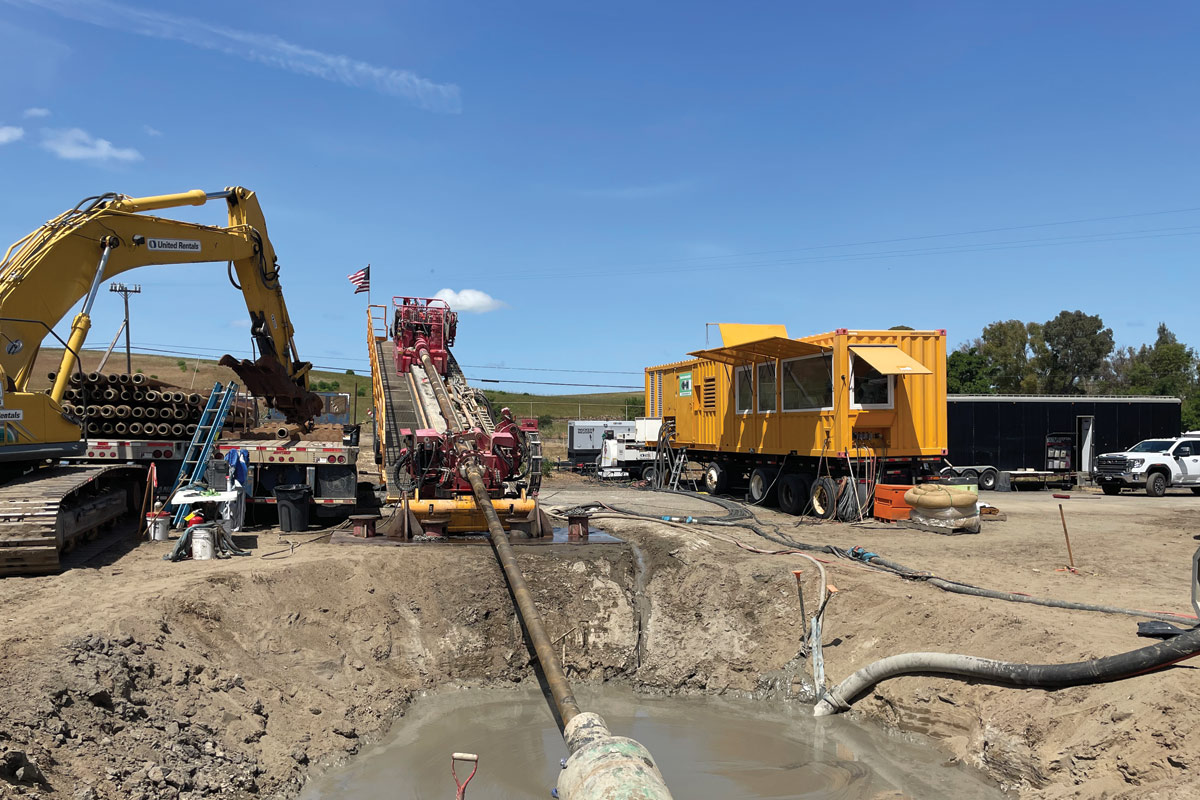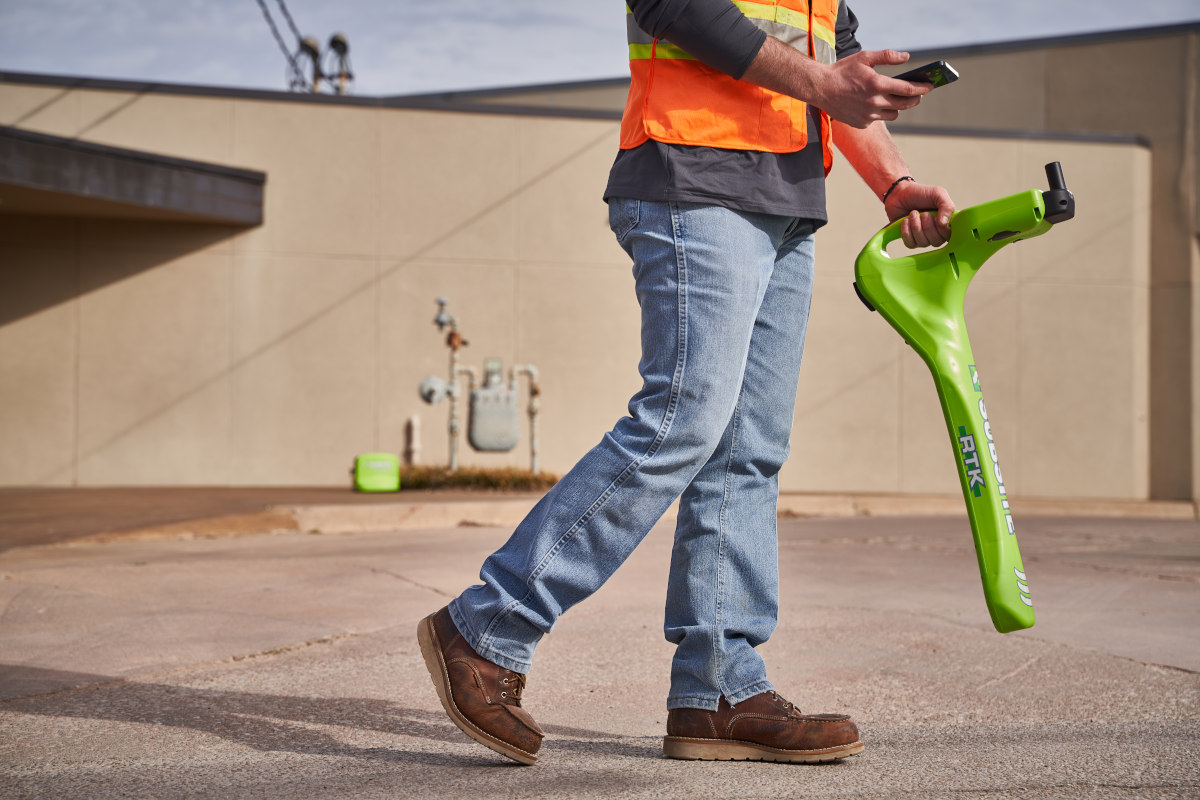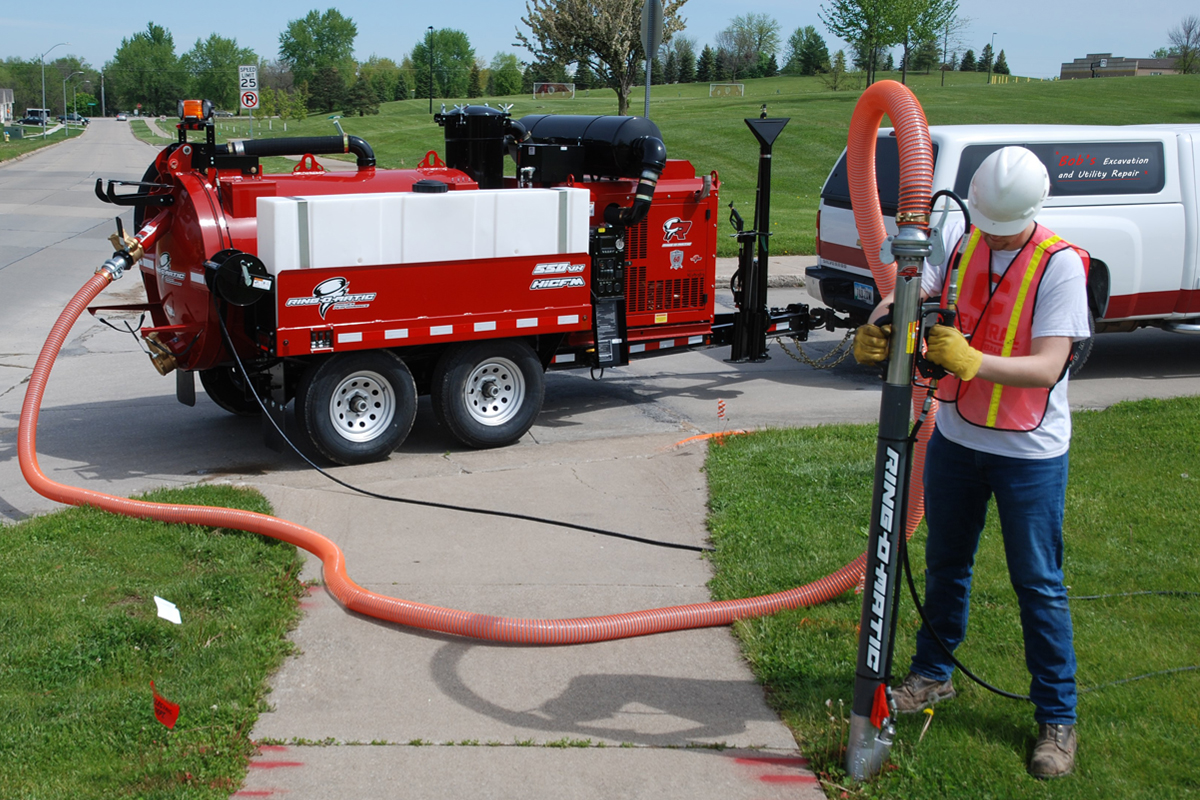Drill Pipe: More Than a Supporting Player on HDD Projects
June 1, 2008
 Drill pipe can be described as the unsung hero of a directional drilling job — not the part of the project that gets the flashy headlines or even a mention of its contribution to the project’s completion. But make no mistake that it is critical to the success, and yes sometimes failure of a project.
Drill pipe can be described as the unsung hero of a directional drilling job — not the part of the project that gets the flashy headlines or even a mention of its contribution to the project’s completion. But make no mistake that it is critical to the success, and yes sometimes failure of a project.That monster-size 1 million-lb drill rig or 30-in.-plus back reamer may get its picture taken for the industry magazines and have the “Wow” factor, but it’s the drill pipe doing its job underground without the glare of the spotlight, quietly going about its business of boring a pilot hole that ensures the product pipe will be installed.
That drilling rig may catch your attention as the big ticket item of the project when it comes to cost, but the drill pipe is also an expensive investment; in fact, a string of drill pipe is the most expensive wear item HDD contractors will purchase, costing anywhere from $25,000 and upward for a complete string (depending of course on the size of the rig you are using).
You can’t emphasize enough the importance of drill pipe to a successful job. “Drill pipe is the backbone of the bore. You are not only creating your pilot bore with it but you are relying on that drill pipe to pullback and help create the specific hole size you need,” says Mike Burns, partner with Underground Tools Inc., based in St. Paul, Minn. “Drill pipe is the most expensive wear part affiliated with the directional drilling rig. It’s something that nobody likes to buy because it is going to wear out but it’s a necessary evil — you are going to have to purchase drill pipe.”
And that’s what drilling folks are doing these days — buying drill pipe. While the economy has slowed in recent months, the drill pipe market keeps plugging right along. Drill pipe manufacturers point to the number of large pipeline projects going on, as well as the mid-size utility projects, as catalysts for the pipe market. With many drilling jobs already awarded and under way, contractors are purchasing pipe.
“[Drill pipe] has been in pretty decent demand this year,” says Chris Fontana, cutting edge and aftermarket parts sales manager for Vermeer Corp., Pella, Iowa. “I wouldn’t want to say the drilling market is booming right now but it’s not following the rest of the marketplace. With that in mind, with drills comes the need for drill stem and it’s in demand.”
There are several types of drill pipe contractors to can choose — from integral forged drill pipe and inertia welded drill pipe to press and fit welded — and a competitive market from which to buy. Whichever drill pipe you select, there are some things that need to be considered before placing that order — from what to think about before signing on the dotted line to how you care for the pipe once it’s in your drilling crew’s possession.
Purchasing Advice
Just like when researching your needs to buy that drill rig, contractors need to do the same to buy drill rod. Two key things to consider are what type of rig they will be using the drill pipe for and how much power the rig has. “Drill pipe is very reliant on the rotary torque of the drill rig,” Burns says. “If you have the wrong size pipe for the wrong rig, you are going to end up with a lot of headaches, a lot of downtime and wasting a lot of money. You need to make sure that your drill pipe is strong enough for the specific application or the specific rig you are running.”
Premier Drill Pipe president Denny Kerr also suggests that you use an S135 grade rod, noting that it will provide fatigue resistance. “You don’t need that kind of strength per se in the pipe but if you don’t use that grade of pipe, you are losing a lot of fatigue resistance. Fatigue resistance is more important than just outright tensile [yield]. Fatigue is very critical in the HDD industry. For one, we push the torque limits of the pipe right to the edge and secondly, there are a lot of cyclical forces because you are typically drilling horizontally with very high bend radiuses.”
But the bottom line is the cost and a small percentage of folks will always buy on price. So what do you advise? What it boils down to is that customers need to know that you are going to get what you pay for.
“Contractors tend to be a little short-sided with buying pipe,” Fontana says, explaining that in some soil conditions you can get away with using a lower quality pipe. But what if down the road you are drilling in more rugged conditions, like cobbles? “That can be a disaster quickly if the quality of pipe isn’t sufficient. You have to look at the overall package.” The doubled shouldered design of OEM drill pipe ensures a quality connection that can handle the torque generated by the drill.
OK. Now that you’ve purchased a string of drill pipe, you’ll want to treat it a way that will give you the longest use. What can you do?
Maintenance Tips
While there is no exact science to know how long your new drill string will last, there are several maintenance actions you can do to maximize the longevity of your drill string. Drill pipe aficionados say just doing routine rod inspection and cleaning can extend the pipe’s life. Most maintenance tips are just plain ‘ole commonsense.
“Operators are probably only getting 60 to 70 percent of the life of the rod than they should expect because they are not applying even minimal inspection procedures,” says Kerr. “If they would do just minimal inspection and cull the rods that were about to fail, which is very easy to do, they could add up to 30 to 40 percent in added life to the overall string.”
Kerr is an active proponent of drillers buying inspection kits that are aerosol-based and relatively inexpensive in cost for the valuable service they provide. He notes that oilfield drillers inspect their strings regularly to prevent string failure, something that their HDD counterparts should take notice of. The kits can test an entire string of pipe to determine which rods are near or at failure — averting a potentially costly disaster.
“Failures just don’t occur immediately. They start as deep fractures, which are visible with testing and it doesn’t even have to be done that frequently,” Kerr says. “We just can’t get the HDD operators to do it. If the pipe’s about to break, it’s almost as if they don’t want to know. Then the snap off comes and they’ve just lost $15,000.”
Other tips include keeping the rod threads clean and while in use, keeping the threads properly coated. Burns says that using the thread protectors after purchase is also important as it protects the threads from impact damage and they also keep dirt and debris off of the threads.
Another tip is to rotate your drill rods in your rod basket so that your first rod that goes in the ground is not always the same rod. “Because that first rod is the rod that takes the most abuse,” Fontana says, adding that by spreading the work out so the top half of the drill pipe isn’t doing all the work will extend the wear of the string.
Many operators also routinely replace rods a few at a time. Kerr advises against this, explaining that placing new rods into a worn string will shorten the rod life by as much as 50 percent or more. “The average purchase is less than a full string,” he says. “It’s understandable why operators don’t replace the entire string at the same time, they do have budgetary concerns.” But from a productivity and possible failure standpoint, it is not advisable.
Maintenance Tips
- Don’t lay your rods in the dirt or mud. Rocks and dirt that stick to the thread dope can cause severe damage to the threads.
- When using, keep threads fully coated with a high-quality thread dope.
- Routinely inspect drill strings using a wet fluorescent magnetic particle inspection kit to identify fatigue cracks.
- Never replace drill rods in your string without replacing the drive chuck or sub saver.
- Avoid mixing old rods with new ones.
Drill pipe experts agree that drillers have gotten much better about the care of their drill string in recent years — something that always wasn’t the case when the HDD market was booming and money wasn’t an issue.
“[Drillers] have gotten much better and have been better educated,” Burns says. “They know the cost of the pipe. They know it has a lifecycle and their bosses are staying on them a lot more than in the past … Just like every other business, you have to watch your costs. Pipe maintenance is a big part of that. You have get as much wear out of that pipe as possible.”
Sharon M. Bueno is managing editor of Trenchless Technology.
Tags: drill pipe, HDD




